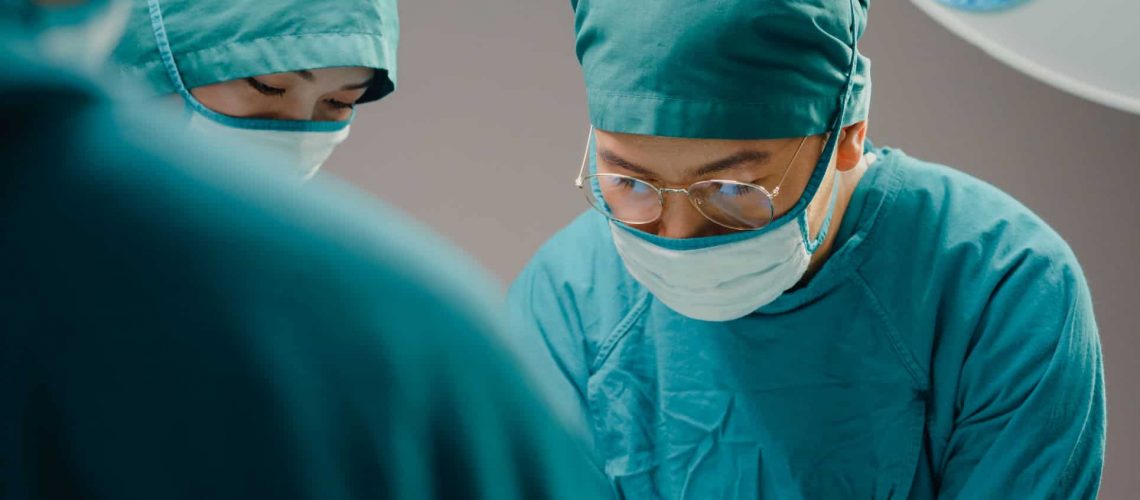Unicompartmental knee replacement (UKR) is a procedure that has gained popularity over the past few years, used to treat patients with arthritis confined to one compartment of their knee. This means that the entire knee may not be affected, only one small area which is treated locally with reduced impact on the surrounding tissues and bone.
UKR surgery is an alternative to a total knee replacement, allows for a quicker recovery time and ensures only the affected area is operated on.
How do you know that UKR is the best possible option for you and your health? Let’s take a closer look.
Contents
What is Arthritis?
Arthritis is a joint inflammation that results in pain, swelling, and stiffness. Most commonly, people are diagnosed with osteoarthritis, as it’s the most common kind of knee arthritis.
With osteoarthritis, the cartilage becomes thinner or wears entirely over time. The bones thicken in response to the lack of cartilage, creating bony “spurs” in the joint area.
Not only does this cause pain, but it can also restrict motion. Surgery is sometimes the only option for many to return to a normal range of motion and live pain-free.
Why Surgery?
More often than not, surgery isn’t offered as the first solution to osteoarthritis. Instead, it’s done after trying medications, injections, and physical therapy.
During the surgery, a small incision is made over the knee to expose the knee joint. Then, the surgeon removes only the damaged part and replaces the damaged bone and cartilage with a plastic component.
Then, a metal component is fixed onto the thigh bone using bone cement. Once that’s finished, the muscles and tendons are repaired around it, and the incision is closed.
In short, the damaged part of the knee is removed and replaced with metal and plastic components, helping you return to activity without the need for a total knee replacement.
There can be various side effects you may encounter, as with any surgery. A UKR can bring side effects such as:
- Knee stiffness
- Infection
- Blood clots
- Nerve and blood vessel damage
- Ligament injuries
- Kneecap dislocation
- Wearing out of the plastic liner
- Loosening of the implant
Evaluation for Surgery
Your orthopedic surgeon will be the one to decide whether you are a good candidate for a partial knee replacement.
The doctor will ask many questions about your general health, the areas in which you experience pain, and how that pain inhibits your ability to function.
Then, your doctor will follow up with particular questions about where your pain is located. If the pain is located on the inside or outside of your knee, you may be a candidate for a partial knee replacement.
If the pain is regularly experienced throughout your entire knee, or the pain is in the front of your knee under your kneecap, then a total knee replacement may be the surgery recommended to you.
Your doctor will conduct a physical examination on your knee and try to determine the exact location of the problem. They’ll also test for your range of motion and how strong your ligaments are. If the ligaments in your knee feel torn or weak, your knee might not be a good candidate for UKR.
Finally, your doctor may suggest X-rays or MRI scans to better evaluate the cartilage and bones in your knee to see the extent of damage and know whether or not a UKR can alleviate your pain.
What Disqualifies You From Surgery?
Not every patient is eligible for UKR surgery. If your arthritis is present in multiple areas of the knee, then it’s impossible to go forward with a UKR procedure. Instead, you may need a total knee replacement.
In addition, if any of the following characteristics are present, you may not be eligible for the procedure.
- Inflammatory arthritis
- Significant knee stiffness
- Ligament damage
Your doctor wants to select patients who are most likely to benefit from the surgery and not require further surgeries down the line. If you’re rejected for the above reasons, other surgical methods may work to relieve your symptoms, just not a UKR.
Benefits Of Unicondylar Knee Replacement
Because a UKR is completed through a smaller incision, patients will likely spend very little time in the hospital. In many cases, you’ll be able to have the procedure completed without any hospital time.
In addition, since the repair is partial rather than complete, you may be able to return to your normal activities sooner than if you had received a total knee replacement.
Another benefit is that many patients will walk the same day that they have their surgery and many resume total activity within a month of the procedure.
Finally, patients will see a lower risk for painful side-effects like infection, blood clots, and blood loss. While much more common in patients treated with a total knee replacement, these side effects are not nearly as common with a UKR.
A complaint many people have with a total knee replacement is that their movement feels unnatural and can be challenging to get used to. Since the healthy parts of the bone, cartilage, and ligaments are left during a UKR, many patients find that their movement feels much better.
Disadvantages to a UKR
There are slight disadvantages to seeking out a UKR. The biggest is that, should your arthritis develop further, you may need another surgery in the future to repair areas that were previously unaffected.
However, the need for additional surgery is only slightly higher for patients receiving a partial knee replacement than patients receiving a total knee replacement.
Thunder Basin Orthopaedics and Sports Medicine Is Here To Help You Recover
At Thunder Basin Orthopaedics and Sports Medicine, our world class surgeons have extensive experience diagnosing, preventing, and treating a wide range of sports injuries and medical conditions.
If you have any concerns about your health or you would like to schedule an appointment with one of our sports medicine physicians, don’t hesitate to call us or fill out our online appointment request form.
We would be delighted to help you and assist you in reaching your top performance.


